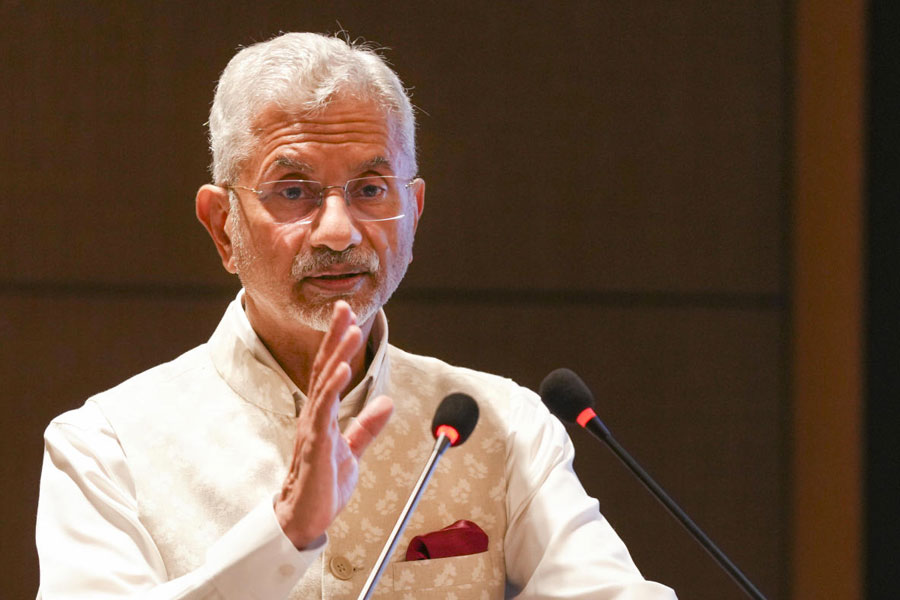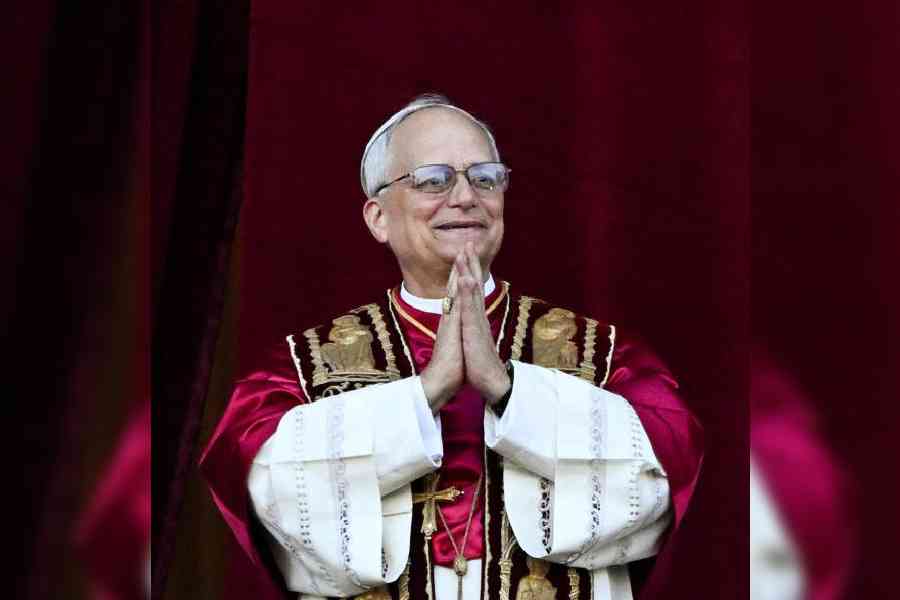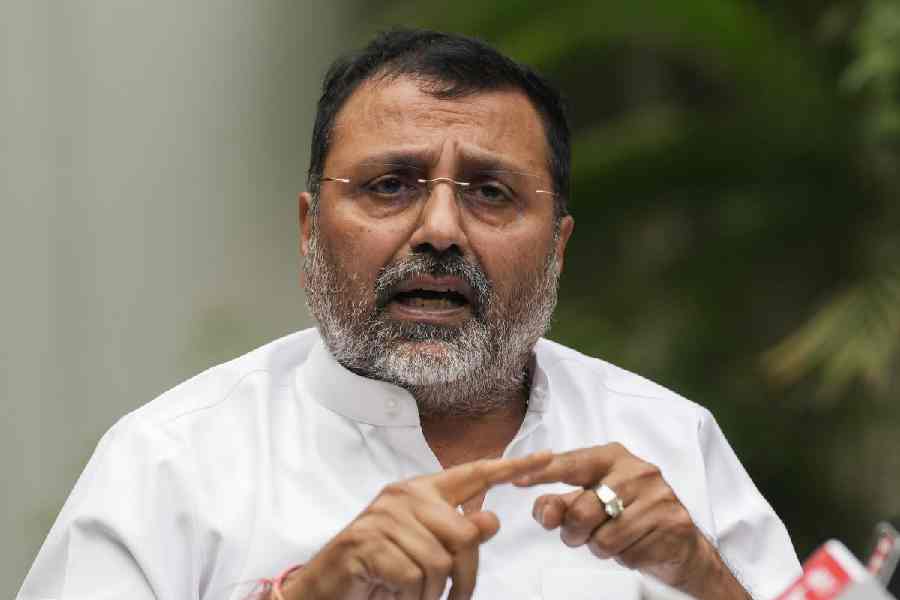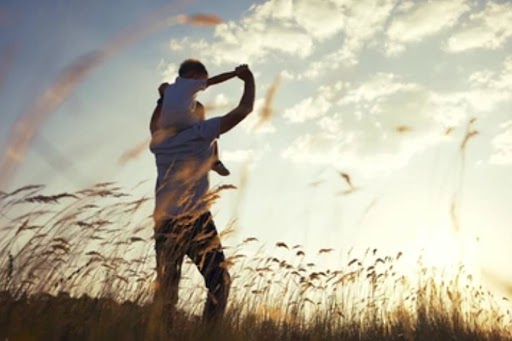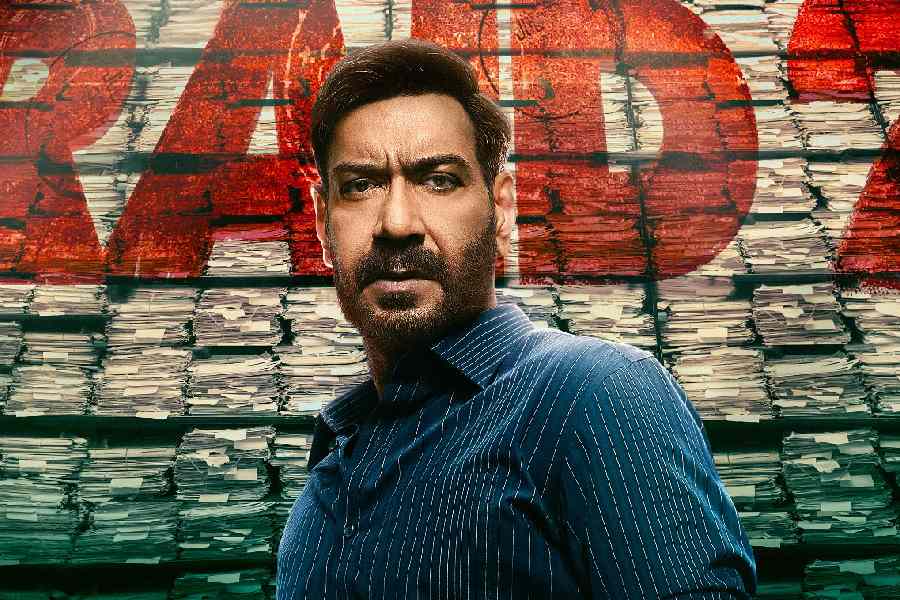

While travelling by boat on the Hooghly, one will come across a temple complex comprising five white temples near a ghat in Uluberia. The tallest one among these has nine spires and appears similar to the Dakshineswar Kali temple. This is Uluberia Anandamoyee Kalimata temple, popularly called Uluberia Kalibari.
The temple on the west bank of the river, is one of the most popular places of worship for people of this area. Inside the premises is a large natmandir where devotees and travellers often rest on the way. The navaratna temple with nine spires was established on 17 Baisakh of 1327 of the Bengali calendar. The temple will soon turn 100 years.
Unlike many other temples in the rural belt of Howrah district, this temple is not as old. In 1918, the then sub-divisional officer (SDO) of Uluberia, Jatindramohan Bando-padhyay and the munsiff of Uluberia Court, Sashijiban Sen joined hands to build this temple on the riverbank. Other wealthy merchants in and around Uluberia, like Sarat Chandra Dhara, Narayan Chandra Manna, Abinash Chandra Mukhopadhyay and his wife Bhabatarini Devi and many others came forward to support the effort. The then zamindar of Andul Raj family, Sailendranath Mitra donated one bigha land for building the temple.
Chandramohan Maity, a resident of Rambagh village in Midnapore, was the artisan who built the temple. The small kashthi pathar (touchstone) idol of Kali was made by Gokul Bihari Bhaskar in Katwa.
The Kali idol is seated on a silver throne and is adorned with gold and silver ornaments and accessories. The grille gate of the sanctum sanctorum is hence kept closed through the day for security reasons while the purohit sits on the porch, distributing prasad and flowers to devotees.
Almost every festival in the Hindu calendar is celebrated at the temple. Along with Kali, there are a number of other temples inside the complex. All of these came up within a span of a few years of the Kali temple. According to records, Abinash Chandra built the Shiva temple in 1920. Dwarik Koyal, a resident of Baganda in Shyampur, built the Radha Govinda temple in 1921 while Uluberia resident Kalachandra Chandra built the Savitri temple in 1923.
A huge Durga mandap inside the premises confirms that Durga Puja is a big festival at this temple. “We celebrate Dol Jatra, Rash Utsav, Rath Jatra, Shivaratri, Durga Puja, Kali Puja and all other festivals at this temple,” said Debasish Rakshit, the secretary of the committee that runs Uluberia Anandamoyee Kalimata temple. The annual utsav takes place on the foundation day of the temple in the month of Baisakh of the Bengali calendar.
“This is the biggest festival. People come from all over Howrah, Hooghly and Midnapore to participate in the utsav,” said Rakshit. While the daily bhog comprises steamed rice and vegetables for the deity, on any particular utsav, khichri is mandatory. Although this is a Kali temple there is no animal sacrifice here. “There is no system of bali here,” said Rakshit.
There is no trust at Uluberia Kalimata temple. A 21-member board looks into the running of the temple. The SDO is always the president of the committee and he or she can elect another 11 members. Another 10 are elected members.
Although devotees donate huge amounts at the temple, a large amount of fund is raised at the Rash Utsav every year. “This is the main source of income of the temple. The month-long mela attracts huge crowds to the temple and people come from far-off places. The revenue from the mela is used for maintenance and other expenses of the temple,” said Rakshit.
Apart from this, there is a guest house and 20 bighas of land for paddy cultivation which form the debuttor property of the temple.


